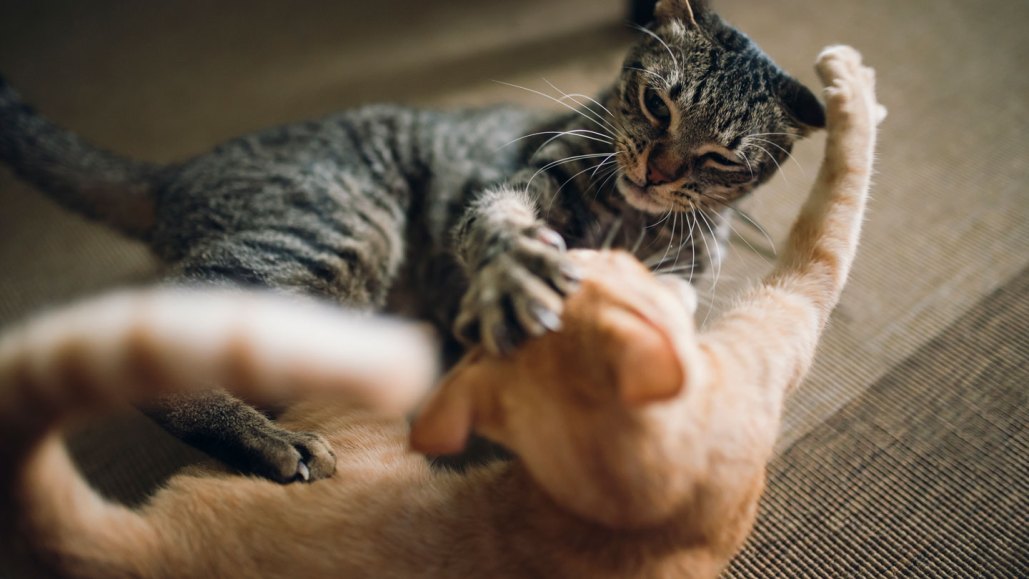How to Determine if Your Cats Are Playing or Fighting

Do your cats simply play or do they genuinely scrap?
Experts point out that particular actions in domestic cats could give clues indicating whether an interaction is friendly, hostile, or somewhere in between, according to a study published in Scientific Reports on January 26.
"We regularly get this question from cat owners," notes cat behavior expert Mikel Delgado from Feline Minds, a cat behavior consulting firm located in Sacramento, Calif., who wasn't involved in the research. "So, seeing researchers focus on this aspect was exciting,” she adds.
While scientists have studied the interpersonal relations of cats involving other cats and humans, differentiating between a playful act or a fight among two cats can be complex, says Noema Gajdoš-Kmecová, a veterinarian and cat behavior researcher at the University of Veterinary Medicine and Pharmacy in Košice, Slovakia.
Occasionally, cat owners overlook the signs of a strained relationship, misinterpreting it as playful behavior. This could inadvertently lead to the cats experiencing stress and becoming sick, she explains. At times, owners also rehouse their cats on falsely presuming their pets are fighting.
To examine and classify interactions, Gajdoš-Kmecová and her team analyzed around 100 videos of different cats interacting in pairs. After watching roughly a third of the videos, she identified six types of behaviors, including wrestling and staying still. Upon watching all videos, she observed how frequently and for how long each cat exhibited one of the listed behaviors. She identified three types of interactions between the cat pairs, namely playful, aggressive, and intermediate, through statistical analysis of these observations.
To validate the findings, the team also watched the videos and categorized each interaction.
Distinct patterns bubbled up. Silent wrestling, for instance, indicated play, whereas chasing and vocal expressions like hissing, growling, or gurgling were signs of aggressive encounters.
The transitional interactions displayed elements of both playful and aggressive encounters, with a particular emphasis on one cat continuously acting upon the other such as pouncing on or grooming its comrade. These encounters might suggest that one cat wants to continue playing whilst the other doesn't, with the more playful cat gently pushing to see if the other one is interested in continuing, the authors suggest.
This study offers initial insights into feline interactions, adds Gajdoš-Kmecová, however it's merely the beginning. She aims to explore subtler behaviors in future, such as ear twitches and tail swishes. Both Gajdoš-Kmecová and Delgado assert that one belligerent encounter doesn’t necessarily imply a problematic relationship.
"This isn't solely about a single interaction," Gajdoš-Kmecová notes. Owners “should genuinely consider different interactions during various phases of the cats' lives and then put it into context."




